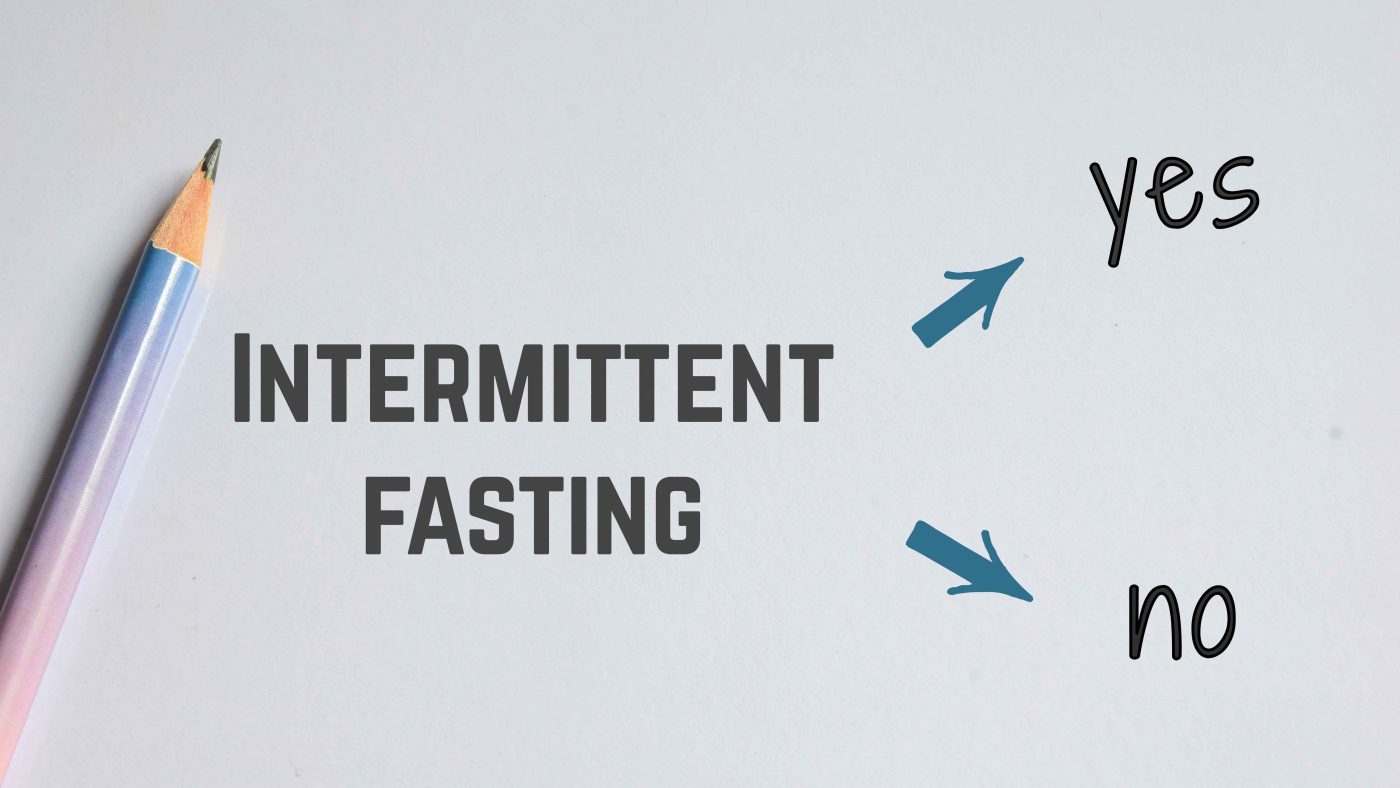General Wellbeing, Weight Management
Positive and Negative Effects of Intermittent Fasting
Intermittent fasting has rapidly gained popularity amongst health enthusiasts for its potential to transform body and mind. However, aside from the well-publicised benefits, some lesser-known effects might surprise you. These effects can be both positive and negative, offering a more nuanced perspective on this dieting approach.
Could intermittent fasting transform your health in ways you never imagined? The answer might be more surprising than you think.
Key Health Takeaways
-
Intermittent fasting cycles between eating and fasting periods, focusing on timing rather than dietary content
-
This eating pattern can lead to notable weight loss and improved metabolic health.
-
Scientific studies support fasting’s benefits for weight management and fat loss.
-
Potential side effects include initial hunger pangs, headaches, and fatigue, which often subside over time.
-
Choosing healthy, nutrient-dense foods to break a fast can enhance the benefits of fasting and reduce weight gain.
What is Intermittent Fasting?
Intermittent fasting has become a buzzword in the health and fitness community, but what does it entail? In simple terms, intermittent fasting is an eating pattern that alternates between periods of eating and fasting. Unlike traditional diets that focus on what you eat, intermittent fasting concentrates primarily on when you eat.
When you practice intermittent fasting, you don’t restrict specific foods but rather adjust your eating times. The most common methods include the 16/8 approach, where you fast for 16 hours and eat during an 8-hour window, and the 5:2 scheme, which involves eating normally for five days and significantly reducing calories for two non-consecutive days. Another popular variation includes fasting for 24 hours once or twice a week. These methods offer flexibility, making it easier to incorporate into your lifestyle.
The basics of intermittent fasting revolve around the notion that our bodies can adapt to reduced or no food intake periods. This adaptation triggers various metabolic and cellular processes that can lead to weight loss, improved metabolic health, and even longevity. The fasting periods can range from 12 to 24-hour fasting window, aiming to shift the body’s energy utilisation from glucose to fat stores, promoting fat burning and overall metabolic efficiency.
Exploring the fundamentals of intermittent fasting can shed light on its benefits, focusing on how timing, rather than food choices, plays a crucial role. Picture a cycle where your body gets a break from constant digestion, allowing it to prioritise essential functions like cellular repair and hormone regulation. This core principle makes intermittent fasting work and is a compelling and impactful health strategy.
Research on Fasting for Weight Loss

Scientific studies underpin intermittent fasting’s reputation as an effective strategy for weight management. Research indicates that an intermittent fasting plan can be more sustainable and practical than conventional dieting methods.
A multitude of scientific studies support the efficacy of intermittent fasting. Long-term observational studies have demonstrated that those who practice intermittent fasting tend to maintain lower body weights and BMIs than those on traditional diets. One study found that intermittent fasting participants lost 3-8% of their body, depending on the type of fast, a striking amount compared to other weight management techniques.
Another review highlighted that consistent fasting showcases more substantial long-term results than regular calorie restriction. This is because intermittent fasting regulates caloric intake and stabilises the body’s metabolism, preventing the common metabolic slowdown associated with prolonged dieting. This stability helps maintain weight loss, proving that fasting is not just a temporary fix.
Notably, the benefits extend to preserving lean muscle mass. Traditional weight loss methods often result in muscle loss alongside fat loss. However, scientific evidence suggests that intermittent fasting helps protect muscle mass while facilitating fat burning. This attribute can be a game-changer for those looking to improve body composition without compromising muscle integrity.
Intermittent fasting has been shown to have numerous benefits for individuals with diabetes. One of the primary benefits is improved insulin sensitivity, which can help to regulate blood sugar levels more effectively. By giving the body periods of fasting, it allows insulin levels to decrease and cells to become more responsive to its effects. This can lead to better blood sugar control and reduced risk of complications associated with diabetes. Additionally, intermittent fasting has been linked to weight loss, which can further improve diabetes management by reducing the body’s resistance to insulin. Overall, intermittent fasting can be a valuable tool in managing diabetes and improving overall health.
The ongoing research on calorie restriction and fat loss continues to affirm that intermittent fasting is not just an effective tool for weight management but also a holistic approach to improving overall metabolic health. Consistent fasting often leads to sustained weight loss, providing a more balanced pathway to achieving and maintaining a healthy weight and reducing cardiovascular disease.
Potential Risks and Negative Effects

Despite its many benefits, intermittent fasting is not without its risks and potential side effects. Before you jump into fasting, it’s prudent to be aware of these aspects to ensure a balanced approach to your health journey.
One of the most commonly reported short-term side effects includes headaches and dizziness, particularly when you initially start fasting. This happens because your body is adjusting to an altered eating pattern, which might initially cause fluctuations in blood sugar levels. To mitigate this, ensure you are well-hydrated and pay attention to how your body responds.
During the initial phases, you might also experience hunger pangs or irritability, colloquially known as “hanger.” This is a normal part of the adjustment period. Your body has been used to regular meals, and adapting to new eating windows takes time. The hunger feeling generally subsides once your body gets accustomed to the routine.
Dehydration is another risk factor if you neglect your water intake during fasting periods. Fasting can sometimes make you forget to drink water, but keeping hydrated is crucial for maintaining optimal bodily functions and reducing adverse side effects. Aim to drink plenty of water or herbal teas to stay hydrated, which will also help manage hunger.
Additionally, fatigue is common as your body learns to switch efficiently between feeding and fasting states. Initially, you might feel lower energy, especially if your diet lacks enough nutrients. Consuming nutrient-dense foods when you break your fast can help alleviate this fatigue. Including adequate carbs, healthy fats, and lean proteins will provide the energy to sustain you through fasting.
While intermittent fasting has significant health benefits, listening to your body and adjusting accordingly is crucial. Also, those with pre-existing health conditions, especially related to blood sugar levels or eating disorders, should consult a healthcare professional before starting any fasting regime. Balancing the potential risks with the remarkable benefits can lead to a healthier, more effective fasting experience.
Additionally, it is vital to ensure you are still meeting your body’s nutrition needs while intermittent fasting. Make sure to consume a well-balanced diet during your eating windows, including plenty of fruits, vegetables, whole grains, lean proteins, and healthy fats. This will help provide your body with the nutrients it needs to function optimally, even during periods of fasting. Remember, intermittent fasting is not a license to eat whatever you want but rather an opportunity to fuel your body with nutritious foods.
Recommended Foods For Successful Intermittent Fasting

Eating the right foods during your eating windows is essential for maximising the benefits of intermittent fasting and reducing dehydration and fatique. The idea is to consume nutrient-rich foods that provide long-lasting energy and aid in your body’s recovery and maintenance.
Best Diet to Break a Fast
Breaking your fast with the right foods is crucial in setting the tone for the next fasting cycle. Nutrient-dense options, such as fruits and lean proteins, can make a significant difference.
Nutrient-dense fruits like berries are excellent for breaking a fast due to their high antioxidant content and natural sugars. Berries like strawberries, blueberries, and raspberries give your body a quick yet steady energy release, gently waking your digestive system without causing a sugar spike. They are also rich in fibre, which helps maintain a feeling of fullness and stabilise blood sugar levels.
Lean proteins such as chicken, fish, or tofu are great for maintaining and building muscle mass. When you break your fast with these proteins, you support muscle repair and growth, which is particularly beneficial if you exercise regularly. Protein intake post-fasting helps reduce muscle breakdown and ensures that your dietary efforts lead to lean gains rather than muscle loss.
Whole grains, including quinoa, brown rice, and oats, provide a steady release of energy due to their complex carbohydrate structure. These grains help sustain you during your eating window and prevent energy crashes that can lead to overeating. Whole grains are also packed with essential nutrients like vitamins, minerals, and fibre, promoting overall health.
Healthy fats from sources like avocados and nuts can also be incredibly beneficial. Healthy fats support cell structures, improve brain function, and provide long-lasting satiety. Including a source of healthy fat in your post-fast meal can help extend the feeling of fullness and energise you throughout your eating period.
Choosing the right foods when you break your fast is fundamental to maximising the benefits of intermittent fasting. These foods will aid in the immediate post-fast recovery and fuel your body for the forthcoming fasting period, making it easier and more beneficial in the long run.
Conclusion
Intermittent fasting offers a compelling route to improved health, with benefits ranging from weight loss to better metabolic management. While it’s important to be mindful of potential side effects, understanding these can help you navigate them more effectively. By incorporating nutrient-rich foods and listening to your body’s needs, you can maximise the advantages and minimise any downsides.
Frequently Asked Questions
-
Intermittent fasting involves cycling between periods of eating and fasting.
-
The most common methods include the 16/8 method, 5:2 diet, and eat-stop-eat approach
-
During fasting periods, only water, black coffee, or herbal tea should be consumed.
-
Fasting for 16 hours is usually recommended for optimal results
-
This allows the body to enter a state of ketosis, where it burns fat for energy
-
However, starting with a 12-hour fast can also be beneficial for beginners
-
The best hours for intermittent fasting depend on personal preference and schedule.
-
Many people find success with a fasting window from 12 pm to 8 pm
-
Experiment with different time frames to find what works best for you
-
Start slowly and gradually increase the fasting window over time
-
Stay hydrated during fasting periods and listen to your body’s hunger signals
-
Focus on whole, nutrient-dense foods during eating windows to support overall health


